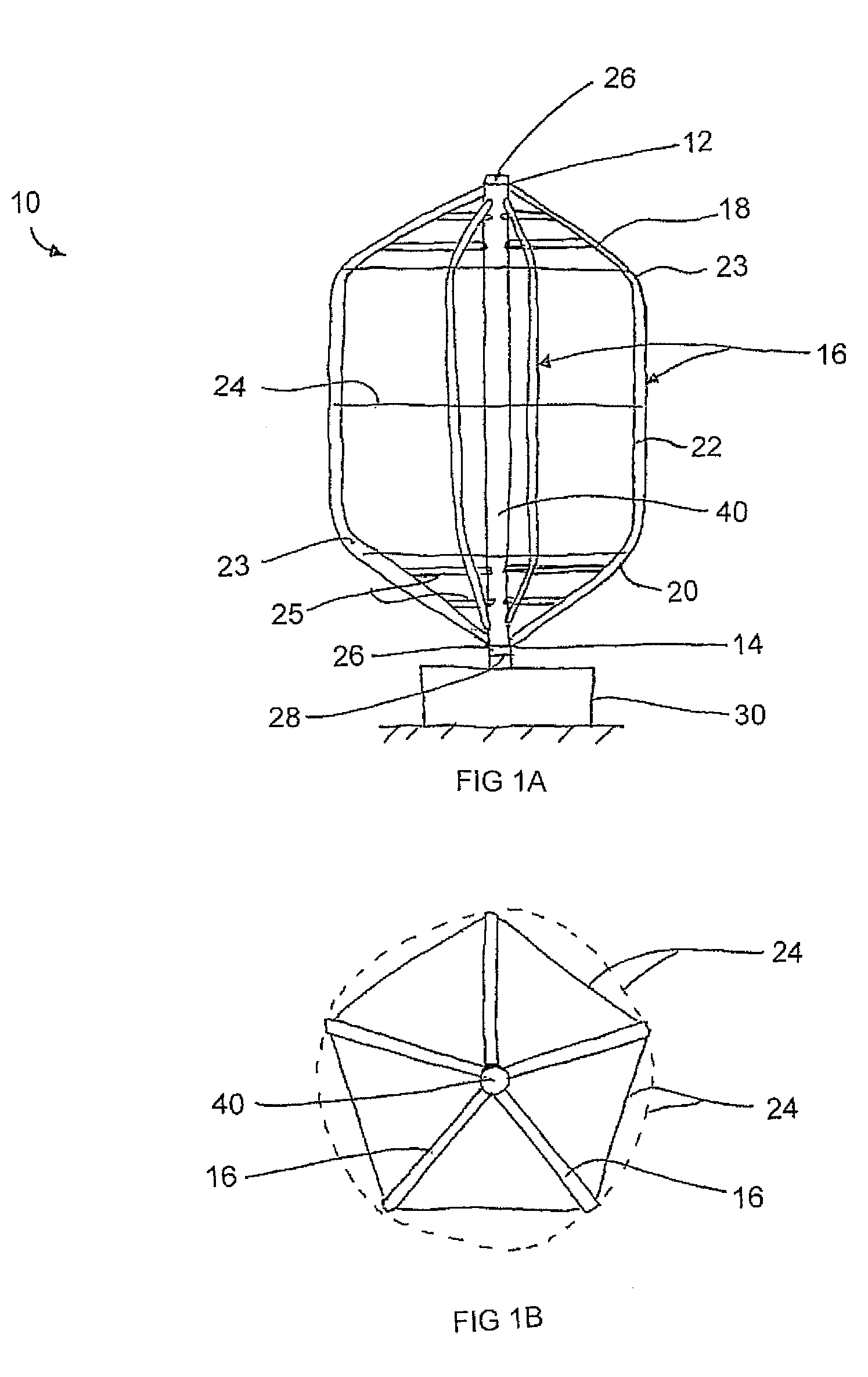Modified darrieus vertical axis turbine
a vertical axis turbine and darrieus technology, applied in vessel construction, renewable energy generation, greenhouse gas reduction, etc., can solve the problems of low overall low efficiency of towers, and low power efficiency of turbines
- Summary
- Abstract
- Description
- Claims
- Application Information
AI Technical Summary
Benefits of technology
Problems solved by technology
Method used
Image
Examples
Embodiment Construction
[0098]Referring to the accompanying figures there is illustrated a vertical axis lift type turbine generally indicated by reference numeral 10.
[0099]Although various embodiments of the turbine are described and illustrated herein, the common features of the first several embodiments will first be described herein.
[0100]The turbine 10 is supported for rotation about a vertical axis spanning between a top end 12 and a bottom end 14 of the turbine. The turbine includes a plurality of blades 16 spanning between the top and bottom ends of the turbine at evenly circumferentially spaced positions about the axis of rotation. The blades are all coupled to one another at the axis at both the top and bottom ends of the turbine. In the illustrated embodiments, a set of five blades are provided at an even spacing relative to one another.
[0101]Each blade 16 is formed of a plurality of blade segments which are assembled together at the time of manufacture. More particularly each blade includes a t...
PUM
 Login to View More
Login to View More Abstract
Description
Claims
Application Information
 Login to View More
Login to View More - R&D
- Intellectual Property
- Life Sciences
- Materials
- Tech Scout
- Unparalleled Data Quality
- Higher Quality Content
- 60% Fewer Hallucinations
Browse by: Latest US Patents, China's latest patents, Technical Efficacy Thesaurus, Application Domain, Technology Topic, Popular Technical Reports.
© 2025 PatSnap. All rights reserved.Legal|Privacy policy|Modern Slavery Act Transparency Statement|Sitemap|About US| Contact US: help@patsnap.com



